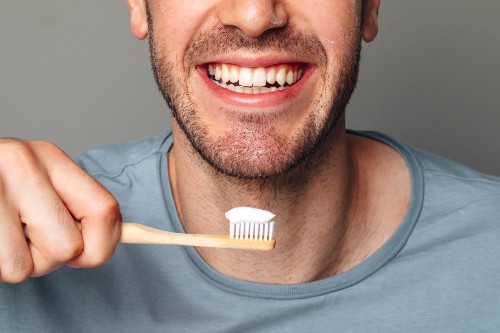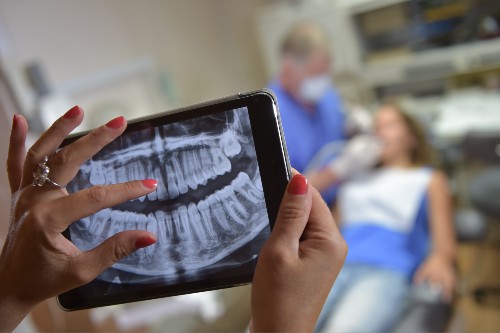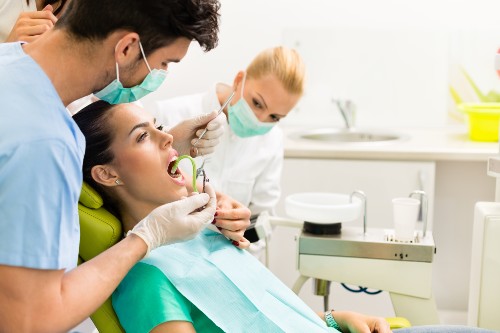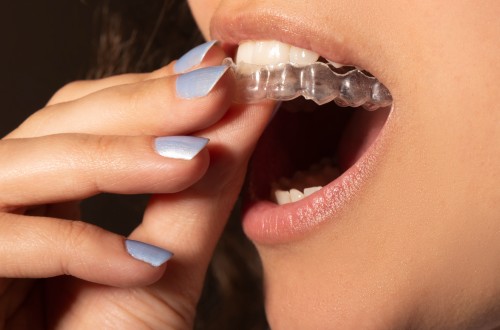
World Oral Health Day and a century of dental innovation
World Oral Health Day – the 20th of March – was established by the FDI World Dental Federation to raise awareness of oral health issues worldwide. Its aim is to empower individuals across the globe with the knowledge and tools to ensure better oral health for all, and World Oral Health Day 2023 is focusing on oral wellbeing at every stage of life.
You don’t have to look too far back in history to see just how far dentistry and oral health awareness has come. It wasn’t so long ago that even relatively minor oral health concerns posed real risks; something that remains true in communities without access to safe and modern dental care, and among the most vulnerable members of society.
The leaps and bounds made in dentistry and oral healthcare have ensured happier, healthier lives for countless people. Due to the amazing work of researchers, innovators, dental professionals and their knowledge, oral health from early childhood into our senior years just keeps improving… and long may it continue.
From ancient roots to modern times
Dentistry in one form or another has been practised since ancient times. The ancient Egyptians were drilling teeth – presumably to drain abscesses – as far back as 2900 BCE.
Historians have also found evidence of dental implants dating from 600 BCE in Lebanon, and rudimentary bridges and gold dental crowns were innovated by the Etruscans in 500 BCE. Across China and South Asia, there is also evidence of ancient dental practices using silver amalgam fillings, and early Arabic physicians developed the science of scaling and cleaning the teeth.
Throughout human history, oral health has continued to develop and grow with new ideas and expertise. However, it was in the 20th and 21st centuries that oral health truly leapt forward, with new technology and discoveries leading to our insight, understanding, and full range of treatments today.
Let’s take a closer look at some of the most important oral health innovations and discoveries from the last century. From new ideas on everyday oral health to jaw-dropping dental breakthroughs, each one contributes to a healthier and more confident smile at every stage of life.

Fluoride toothpaste and the fluoridation of water
Fluoride toothpaste has been a global standard for everyday oral healthcare since the beginning of the 20th century. It’s something we perhaps all take for granted today, but there’s little doubt that this innovation has helped billions of people worldwide help improve and maintain their dental health.
An American dentist, Frederick McKay, noticed that patients living in a particular part of Colorado had an almost total absence of tooth decay. After years of research, McKay and his associates were able to demonstrate this was due in part to a high level of naturally occurring fluoride in the drinking water. By 1945, fluoride was added to the drinking water in many parts of the United States, with several developed countries worldwide soon following suit.
The result? Since the introduction of fluoridation, dental caries - loss of tooth enamel - in children in countries where fluoride is added to drinking water decreased by over 50%..
Anaesthesia and painless dentistry
Trying to imagine what dental surgery - and even basic dental procedures - were like prior to the discovery of anaesthetics is far from comfortable.
Dentaphobia is among the most common phobias among British patients – 10% of surveyed Britons claim to fear the dentist, many of whom put off important treatments as a result of their anxieties. Contemporary sedation methods have helped countless uneasy patients undergo dental procedures and include inhalation sedation (wearing a face mask to inhale a gas sedative) and IV sedation (when a sedative drug is injected).
The development of lidocaine in 1947 was a key milestone in this regard, alongside other numbing and nerve-blocking substances that were rapidly absorbed by the bloodstream. Today, local anaesthesia and safe, reliable general anaesthesia is central to modern dentistry, allowing practitioners to undertake a range of complex procedures relatively pain-free.

Dental X-rays
Where would modern medicine be without the X-ray? Beside its obvious benefits to general healthcare and the treatment of various issues, it’s absolutely central to orthodontics and various dental procedures, too.
The very first dental X-ray image was produced back in 1896 by Dr Otto Walkhoff.
It wasn’t until the 1950s and 1960s, however, that radiographs were safe and standardised enough to be a key tool for dentists to use on their patients.
The electric toothbrush
From twigs and animal hair to the invention of nylon bristles and the electric toothbrush, the devices we use to clean our teeth twice a day have come a long way.
Today’s electric toothbrushes have their roots in early innovations from the 1920s, when vibrating and spinning toothbrush heads were found to be highly effective in deep cleaning the surface of the teeth. While dentists state that your everyday manual toothbrush is perfectly effective for everyday oral health, it has been found that electric toothbrushes are -on the whole - more effective at removing plaque and keeping gum disease at bay.

Composite fillings and porcelain crowns
Dentists have experimented with countless substances over the centuries, many of which (including mercury, lead and other poisonous chemicals) have been superseded by stronger and safer materials.
Composite resins started being used for fillings in the 1960s, and the technology quickly advanced to include the tooth-coloured composites now commonplace today. Likewise, the use of porcelain for crowns arose at a similar point in the mid-20th century, matching effective and durable dentistry with a growing demand for aesthetics and more discreet materials.
Intra-oral scanners
Bringing together laser precision and optical scanning technology, intra-oral scanners represent a new horizon for dental imagery. This contemporary image generation tool uses detailed scans to create colourised 3D imagery (capturing over 6,000 images per second), enhancing clinical precision and replacing the need for manually creating impressions of the teeth.
These scanners, such as the iTero scanners often used to create Invisalign aligners, implants, crowns and bridges, are making dentistry more comfortable and accurate than ever before.

Clear aligners and braces
Good dental health is about comfort, wellbeing and confidence. The progress we’ve seen in the field of orthodontics over the past century is significant, not least because orthodontics as we know it today has only really been around for 70 years or so.
Today, people seeking teeth straightening treatments have an array of options available to them.
From traditional fixed metal braces to discreet clear aligners, it’s simply never been easier to achieve a happier, healthier and more confident smile.
Dentistry for a brighter, happier and healthier future
We could quite easily go on to list dozens more innovations, including technological leaps in dental implants to popular teeth whitening treatments like Philips ZOOM! and more. Research continues uncovering new approaches to oral health, and the years and decades to come are sure to give rise to no shortage of important breakthroughs and discoveries.
At Bupa Dental Care, we know the difference that quality dental care makes. This World Oral Health Day, join us in celebrating the achievements of the past, supporting the ongoing mission to raise awareness of oral health issues worldwide, and spreading smiles across the globe.
If you have any questions on how to keep your mouth healthy, or would like to book a dental check-up, contact your nearest practice.


